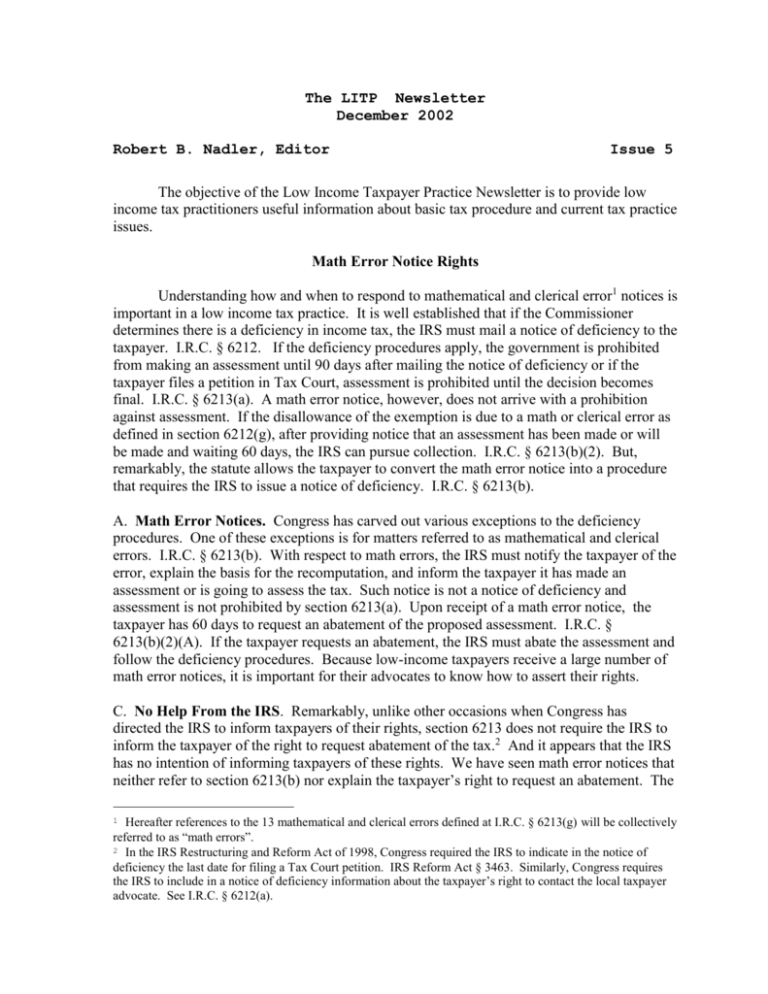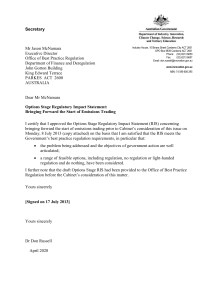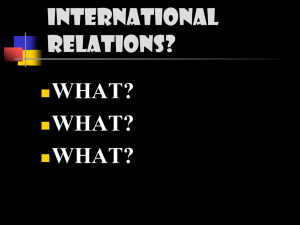
The LITP Newsletter
December 2002
Robert B. Nadler, Editor
Issue 5
The objective of the Low Income Taxpayer Practice Newsletter is to provide low
income tax practitioners useful information about basic tax procedure and current tax practice
issues.
Math Error Notice Rights
Understanding how and when to respond to mathematical and clerical error1 notices is
important in a low income tax practice. It is well established that if the Commissioner
determines there is a deficiency in income tax, the IRS must mail a notice of deficiency to the
taxpayer. I.R.C. § 6212. If the deficiency procedures apply, the government is prohibited
from making an assessment until 90 days after mailing the notice of deficiency or if the
taxpayer files a petition in Tax Court, assessment is prohibited until the decision becomes
final. I.R.C. § 6213(a). A math error notice, however, does not arrive with a prohibition
against assessment. If the disallowance of the exemption is due to a math or clerical error as
defined in section 6212(g), after providing notice that an assessment has been made or will
be made and waiting 60 days, the IRS can pursue collection. I.R.C. § 6213(b)(2). But,
remarkably, the statute allows the taxpayer to convert the math error notice into a procedure
that requires the IRS to issue a notice of deficiency. I.R.C. § 6213(b).
A. Math Error Notices. Congress has carved out various exceptions to the deficiency
procedures. One of these exceptions is for matters referred to as mathematical and clerical
errors. I.R.C. § 6213(b). With respect to math errors, the IRS must notify the taxpayer of the
error, explain the basis for the recomputation, and inform the taxpayer it has made an
assessment or is going to assess the tax. Such notice is not a notice of deficiency and
assessment is not prohibited by section 6213(a). Upon receipt of a math error notice, the
taxpayer has 60 days to request an abatement of the proposed assessment. I.R.C. §
6213(b)(2)(A). If the taxpayer requests an abatement, the IRS must abate the assessment and
follow the deficiency procedures. Because low-income taxpayers receive a large number of
math error notices, it is important for their advocates to know how to assert their rights.
C. No Help From the IRS. Remarkably, unlike other occasions when Congress has
directed the IRS to inform taxpayers of their rights, section 6213 does not require the IRS to
inform the taxpayer of the right to request abatement of the tax.2 And it appears that the IRS
has no intention of informing taxpayers of these rights. We have seen math error notices that
neither refer to section 6213(b) nor explain the taxpayer’s right to request an abatement. The
1
Hereafter references to the 13 mathematical and clerical errors defined at I.R.C. § 6213(g) will be collectively
referred to as “math errors”.
2 In the IRS Restructuring and Reform Act of 1998, Congress required the IRS to indicate in the notice of
deficiency the last date for filing a Tax Court petition. IRS Reform Act § 3463. Similarly, Congress requires
the IRS to include in a notice of deficiency information about the taxpayer’s right to contact the local taxpayer
advocate. See I.R.C. § 6212(a).
failure to inform taxpayers of their rights, especially low-income taxpayers, clearly puts them
at a disadvantage. So, fair warned is fair armed. Effective representation includes
identifying math error notices and advising your clients of their rights.
D. Math Errors. Over time, Congress has enlarged the circumstances that are covered by
“mathematical or clerical errors”.
General Application. The first five math errors defined in section 6213(g) have
general application. These include computation errors on returns 3, use of an incorrect IRS
table 4, an entry on the return that is inconsistent with another entry 5, an omission of
information that is required on a return to substantiate an entry on the return6, and an entry on
a return of a deduction or credit in an amount which exceeds the statutory limit 7.
Several of the remaining math errors are especially important to low-income
taxpayers.
Incorrect TINs. Four of the math errors relate to the omission of a correct taxpayer
identification numbers. These are for the earned income credit8, for expenses relating to
household and dependent care services necessary for gainful employment9,
for the child care credit10, and for education tuition and related expenses 11. If your client’s
social security number has been entered in error on the return, filing a notice of abatement
will prevent assessment and collection while the matter is corrected.
Other Issues. Several of the remaining math errors also impact low-income
taxpayers.
1) An omission of information required for the earned income credit 12;
2) The failure to include a TIN for an individual whose age affects the amount of a
credit under sections 21, 24, or 32 and the computation reflects the individual’s age is
different than the age based on his or her TIN 13; and
3) Information from the Federal Case Registry of Child Support Orders that
indicates that the taxpayer is not the custodial parent14.
3
Section 6213(g)(2)(A)
Section 6213(g)(2)(B)
5
Section 6213(g)(2)(C)
6
Section 6213(g)(2)(D)
7
Section 6213(g)(2)(E)
8
Section 6213(g)(2)(F)
9
Section 6213(g)(2)(H)
10
Section 6213(g)(2)(I)
11
Section 6213(g)(2)(J)
12
Section 6213(g)(2)(K)
13
Section 6213(g)(2)(L)
14
Section 6213(g)(2)(M). This provision is effective for taxable years beginning in 2004.
4
2
D. To Abate or Not To Abate. Whether your client should request abatement obviously
depends upon the accuracy of the IRS notice and the facts of the case. If the information in
the math error notice is correct, then little or no purpose would be served by requesting
abatement. But, if the taxpayer’s return contains a problem that can be corrected (for
example, an incorrect social security number due to a transposition error), filing a request for
abatement will require the IRS to abate the tax and prevent collection action. Stopping
unnecessary collection action is important to clients who are trying to pay basic living
expenses.
D. Follow Through. If you submit a request for abatement, you need to follow through by
contacting the IRS to see if the abatement was made. IRS personnel are reasonably well
trained and conscientious. Most IRS employees understand the IRS is prohibited from taking
collection action until the deficiency procedures are followed. However, it is unlikely that
many IRS employees are familiar with the convoluted rules governing math error notices.
You should be ready to direct their attention to the precise code sections and to the Internal
Revenue Manual.15
Practice Idea. Mail It In. It appears that a taxpayer’s request for abatement of the amount
in the math error notice can either be mailed to the IRS or orally communicated. 16 It is
generally not advisable to rely on oral agreements with the IRS. The IRS is an enormous
organization. Employees change jobs and sometimes memories fail. If the IRS cannot figure
out from its records if your client made an oral request, then the burden of proving the oral
request shifts to your client. Perhaps you can prepare affidavits relating the detail of
conversations. But, if the IRS disagrees with your client’s account of events, you may have
to petition the Tax Court for an injunction under section 6213(a). All of this can consume
considerable time and resources and your client might not prevail in the end. The simple
solution to this dilemma is to send the request for abatement by certified or registered mail.
Even if the IRS loses the document, they will almost certainly acknowledge a true copy that
has been sent by certified or registered mail.
The Low Income Tax Practice Newsletter is produced by Legal Aid of Middle Tennessee and the
Cumberlands and the Tennessee Taxpayer Project, Mary Gillum, Project Coordinator and Robert B.
Nadler, Attorney. The Tennessee Taxpayer Project is funded in part by the IRS LITC Grant Program.
We are interested in any subjects that Legal Aid lawyers would like discussed. Please direct questions or
comments to mgillum@lglaid.org or rnadler@lglaid.org . © 2002, Low Income Tax Practice Newsletter,
all rights reserved.
I.R.M. section 21.5.4.3.1 (10-01-2001), Math Error Response Review, provides: “1. When the taxpayer
requests an abatement within 60 days, the abatement must be made. Reassess through statutory deficiency
procedures.”
16 SCA 1998-040, 98 TNT 250-40, December 23, 1998.
15
3



